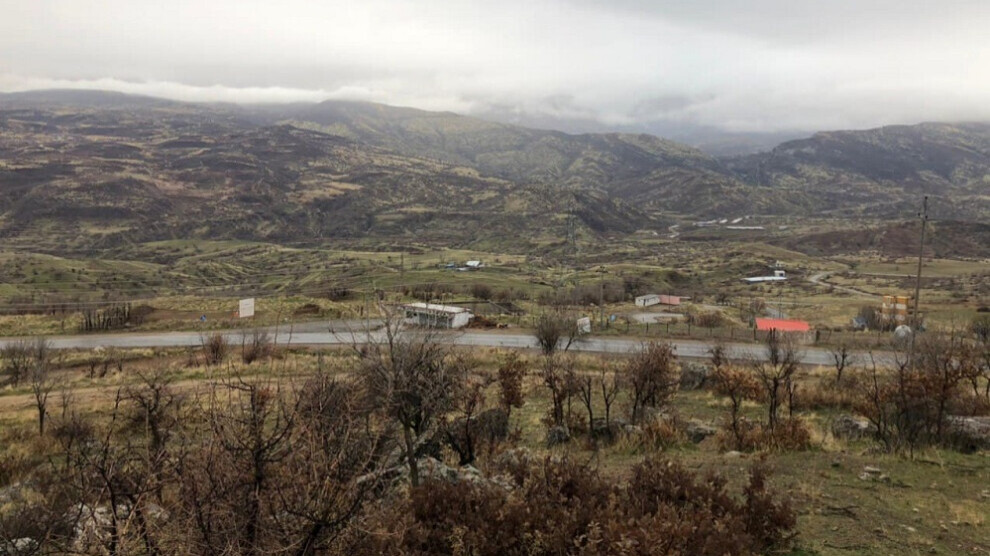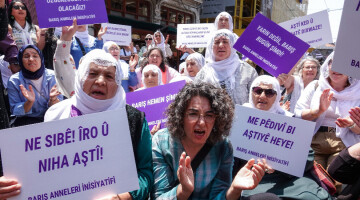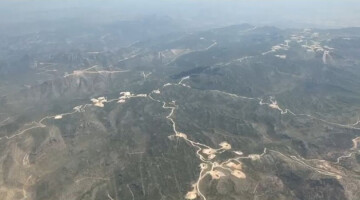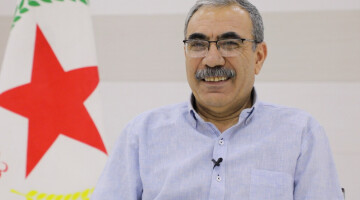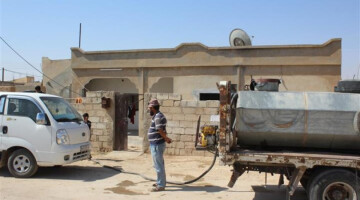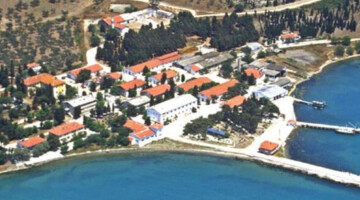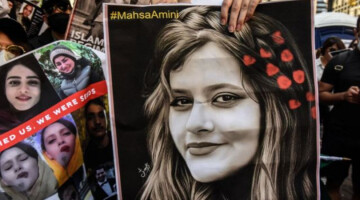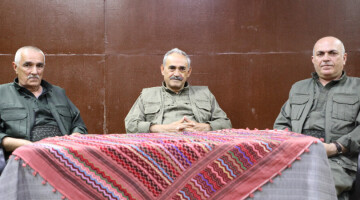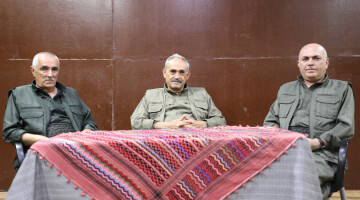The provocations of the Kurdistan Democratic Party (KDP) began in 2020 with the melting of the snow. The ruling party in southern Kurdistan stationed peshmerga units loyal to it in Zînê Wertê, the so-called "gateway to the Qandil", the center of the Medya Defense Zones under guerrilla control. This action was not only a provocation against the Kurdish freedom movement, but also against the second major party in southern Kurdistan, the KDP rival PUK (Patriotic Union of Kurdistan), under whose sovereignty Zînê Wertê is located.
Guerrilla fighters killed with KDP information
The KDP peshmerga were conducting military reconnaissance for Turkey in Zînê Wertê. Based on the information that the KDP passed on to the Turkish military, three fighters from the People's Defense Forces (HPG) were killed by a Turkish air strike. Only because of protests by the people of Southern Kurdistan, but also in the entire region, did the KDP have to take a step back.
Provocations continue
However, this in no way meant that the KDP gave up its collaboration with Turkish fascism. It expanded positions, stationed troops and prepared new provocations. The KDP thus wants to eliminate any opposition to its nepotistic feudal system. The KDP’s desire for power suits Turkey just fine. An internal Kurdish civil war would strengthen Turkey's position in the region and could set back Kurdish achievements by a century. Many peshmergas, who defended and liberated towns like Kirkuk against ISIS side by side with the guerrillas, are also aware of this. Therefore, the KDP relies on ultra-loyal special forces.
Attack in Gare
Beginning on October 25, the KDP began deploying special troops from the Leşkerî Gûlan directly affiliated to Prime Minister Masrour Barzani to the guerrilla areas of Gare and Metina. This troop deployment was accompanied by a large number of heavy weapons and armored vehicles. The troops were stationed in the Deşta Nehlê and Çemankê areas. Despite warnings from the HPG, KDP units advanced into guerrilla territory. On November 4, the situation escalated when KDP units attacked the guerrilla camp near the village of Bêbadê. The guerrillas defended themselves with the least possible intensity and continued to rely on a political and democratic solution. The guerrilla command called for dialogue and warned against escalation.
Encirclement as far as Qandil
However, the KDP continued its provocations and now began to encircle the guerrillas with checkpoints in Begova, Brifka, Batufa and Banka in the Metina region, thus supporting a Turkish operation. On Nov. 21, a unit of 300 soldiers with 56 armored vehicles was also deployed in Heci Umran and Çoman areas in the Qandil region. This marked a new stage in the KDP’s aggression.
The guerrilla areas are being encircled step by step, and the population is being subjected to an embargo so that they can no longer meet even their basic needs and are forced to leave the Medya Defense Zones.
New escalation on December 13
On December 13, the KDP went one step further. In the morning hours, its units stopped a vehicle near the village of Reşankê near Zawite in Duhok. When the KDP’s special forces realized that there were HPG guerrilla fighters in the vehicle, they opened fire and riddled the car with bullets. In the evening of the same day, KDP peshmerga abruptly opened fire on a vehicle occupied by HPG members in the outskirts of the villages of Kanê and Sêgirkê, about 70 kilometers northeast of Duhok. Two fighters were seriously injured in the attack and the ensuing battle. Another guerrilla fighter was slightly wounded. The regional population reported that none of the hundreds of peshmerga from the villages in the region were involved in this attack, but it was the KDP’s special forces. The HPG also said in a statement that the attacks on vehicles were a centrally planned, systematic operation. They held the forces carrying out the attacks and those behind them responsible.
The role of the Roj-Peshmerga
However, one person was killed in the battle. His identity allows deep conclusions to be drawn. Cahit Abdurrahman comes from Northern Kurdistan, had fought for a while in the ranks of the PKK, deserted and has since worked as a contra. It is known that he was a member of the so-called Roj-Peshmerga, a contra militia recruited mainly from refugees from Syria and trained by Turkish intelligence service MIT. This made it clear that the Roj-Peshmerga were involved in encircling the guerrilla areas.
PKK deserters as contras
Masrour Barzani is apparently resorting to the Turkish state's policy of recruiting deserters from the ranks of the PKK, turning them into contras and using them in death squads, torture units and paramilitary units. With the so-called Roj-Peshmerga, which were set to be used as counterrevolutionary forces of the so-called Kurdish National Council (ENKS) controlled by the KDP and Ankara against the revolution of Rojava and Shengal, as well as the Leşkerî Gûlan, the KDP seems to believe it can achieve results against the PKK. The Roj-Peshmerga are equipped with, among other things, state-of-the-art German weapons such as Dingo armored vehicles. Further provocations, with which the KDP is trying to let the region slide into a civil war for good and to blame the PKK for this, are to be expected.

